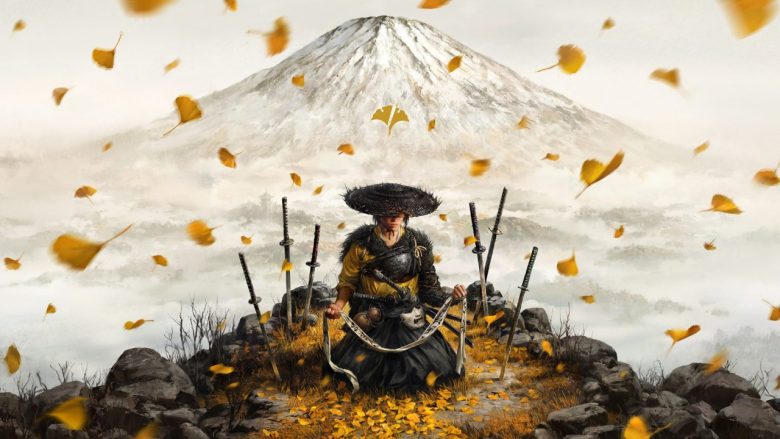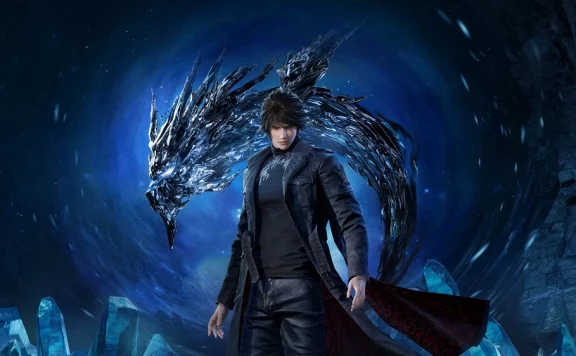Following a game like Ghost of Tsushima was always going to be like writing the difficult second book. It was such a runaway hit, whose success owed as much to the risks it took as to its inherent quality. The lack of a target lock irked some players, as did its tendency to lean heavily into style and spectacle. And yet Tsushima felt unique, holding its grand narrative to account as much as its action and stealth gameplay. By both employing and subverting tropes we knew all too well, Sucker Punch produced something new. Ghost of Yotei comes at a time when other games by other devs have walked similar paths, but Sucker Punch’s Japan has lost none of its splendour, even if this title is a harsher, sometimes darker version of what came before.
In Ghost of Yotei, Atsu is out for revenge. Just like Jin Sakai in Ghost of Tsushima, she has a score to settle, but whereas Jin was looking to restore honour to his fallen people and take vengeance on the invaders who had crippled his nation, Atsu’s quest is even more personal. In a story similar to Naoe’s in Assassin’s Creed Shadows, Ghost of Yotei sees Atsu lose her family as a child while she herself is left for dead. Surviving through sheer determination, she has dedicated her entire life to becoming strong enough to hunt down and kill the Yotei Six, the group of masked killers who destroyed her childhood.
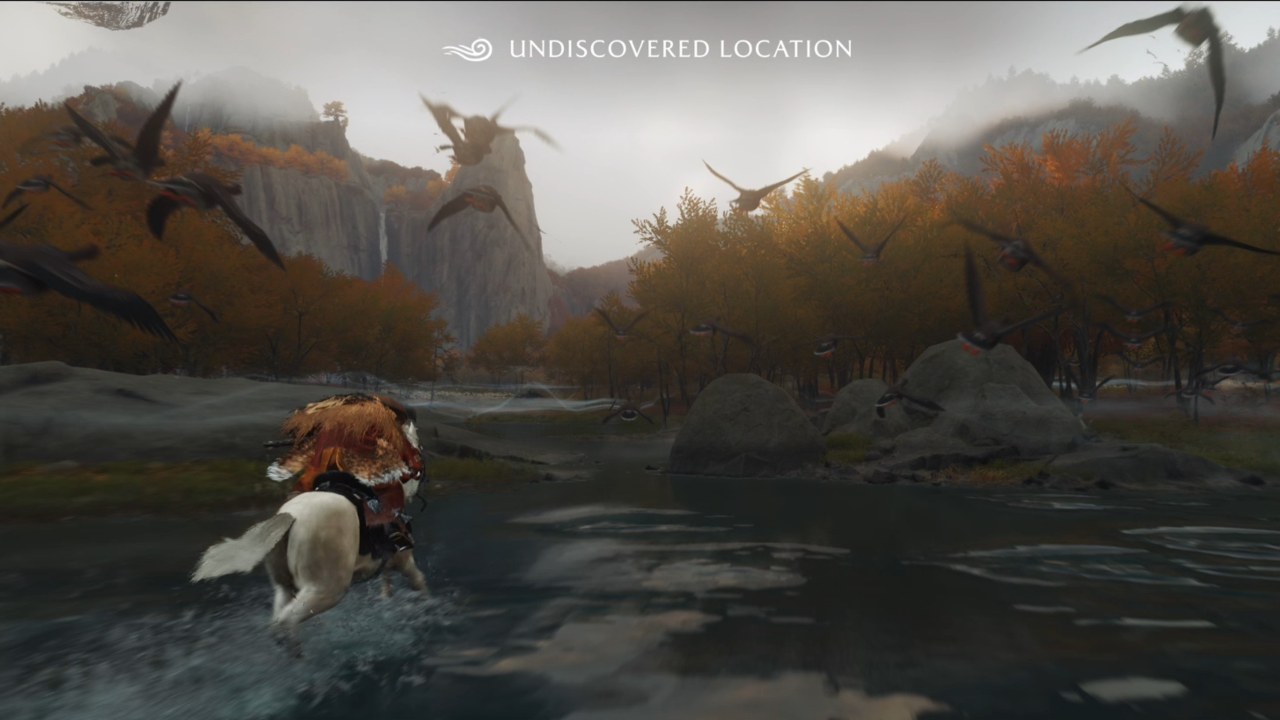
They are led by Saito, a dangerous, idealistic bandit who has united the disillusioned people of Japan into a force of rebellion, ostensibly liberating the island nation of Ezo through brutal, merciless means. Immediately this creates a different atmosphere to the last game; this is not a tale of grand rebellion, but of bloody vengeance. Atsu is untroubled by Jin’s sense of honour, making a living as a bounty hunter, a profession that carries over into one of the many side activities you can engage in.
The world is incredibly open. As the story begins you’re roaming the lands in the shadow of Mount Yotei, hunting one of Saito’s men known as the Spider. From almost the get-go you can travel wherever you like, and the map is heaving with points of interest. Foxes return, leading you to special charms, and the golden bird is also present, whose glistening wings will guide you toward health-boosting hot springs, spirit-boosting bamboo minigames, or wolf dens. This new activity brings Atsu face to face with a scattered wolf pack, and by slaying the bandits hunting them you can build a bond that summons a wolf companion during combat.

Atsu slowly grows her own legend through actions like claiming bounties, defending the people of Ezo, and liberating homesteads from Saito’s forces. She becomes more and more infamous as the story progresses, building relationships with individual, recurring vendors and NPCs instead of meeting new ones in every town. The people of Ezo are itinerant, and merchants will pop up in new settlements, or sometimes join you when you camp. On the one hand it’s great to feel like you’re crafting a legacy as you go, but on the other it stretches believability a little when the guy you buy maps off appears at a camp miles away from where you normally see him, or when you run into the same wolf in the same predicament over and over.
Perhaps unsurprisingly, narrative is a strong focal point in Ghost of Yotei. The first area can easily offer 15 to 20 hours of gameplay before you move on and follow the story, which allows you to pick and choose which member of the Six you want to investigate and track at a given time. You can hop between these quests lines almost at will as Atsu learns more about them from either helping NPCs, finishing quests, or interrogating enemies. The strength lies more in the telling of the story than the story itself, which is mostly quite straightforward. Again, though, one of the most interesting and nuanced characters is the main villain, whose motivations are initially unclear beyond the overall goal of “liberating” Ezo. It makes the story feel less linear and more personal.
Any minor complaints curl up like Autumn leaves and fall away in the face of Ghost of Yotei’s combat and exploration. The former feels similar to Tsushima but with a few notable differences. For a start, where Jin had stances to counter certain enemy attacks, Atsu carries multiple weapons that exist in a rock-paper-scissors relationship with your enemy. The huge, two-handed odachi, for example, is to be used against brute enemies, while the dual katana style helps defeat spearmen. Where some games will reward you with a new weapon for killing a boss or hitting a story milestone, in Yotei you must seek out masters and train with them in extended side stories.
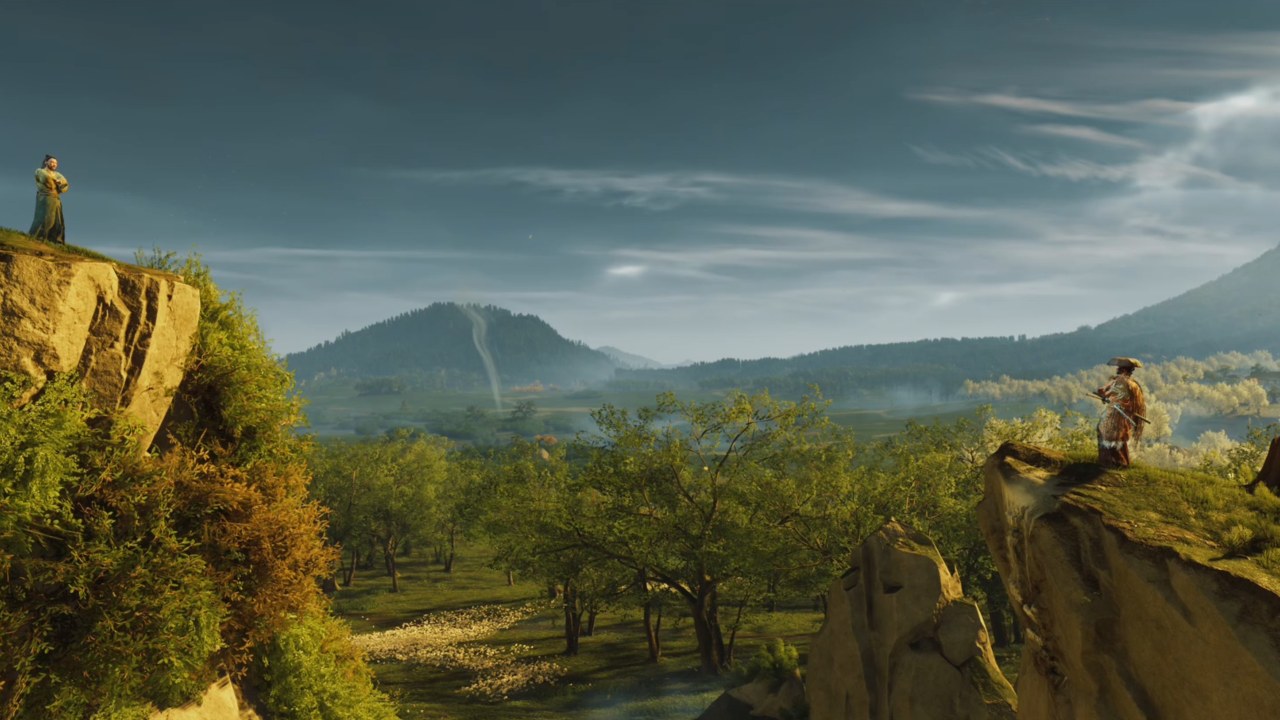
For instance, when you learn the dual katana style, you will find simple tasks like cutting bamboo far harder because of the complicated button combos you need to press. Atsu’s progress is signified by this becoming easier as she learns, which is a really nice touch and feels both thematic and satisfying. In fact, many of Yotei’s side quests are like this. Very few invoke simple fetch quests, and often they’re multiple-stage endeavours that bring the action to you, instead of forcing you to ride around endlessly. Sucker Punch let the NPCs add colour and vibrancy to the world, and rather than confine flavour to the flavour text, it’s the people you meet who bring colour to the world.
Combat still eschews a lock-on button in favour of allowing you to face everyone at once, which is handy as you’ll often be surrounded by groups of enemies and can’t always rely on your wolf friend to come to your aid. Atsu can throw dust in the enemy’s face, disarm them and throw the weapon at them or their allies for an instant kill, and learn multiple techniques that make her a truly formidable opponent. But whereas Jin had many allies in his quest, Atsu is more of a lone wolf and is often presented as being over-confident and a little out of her depth. She’s highly competent but a little arrogant, and the story occasionally punishes her for it.
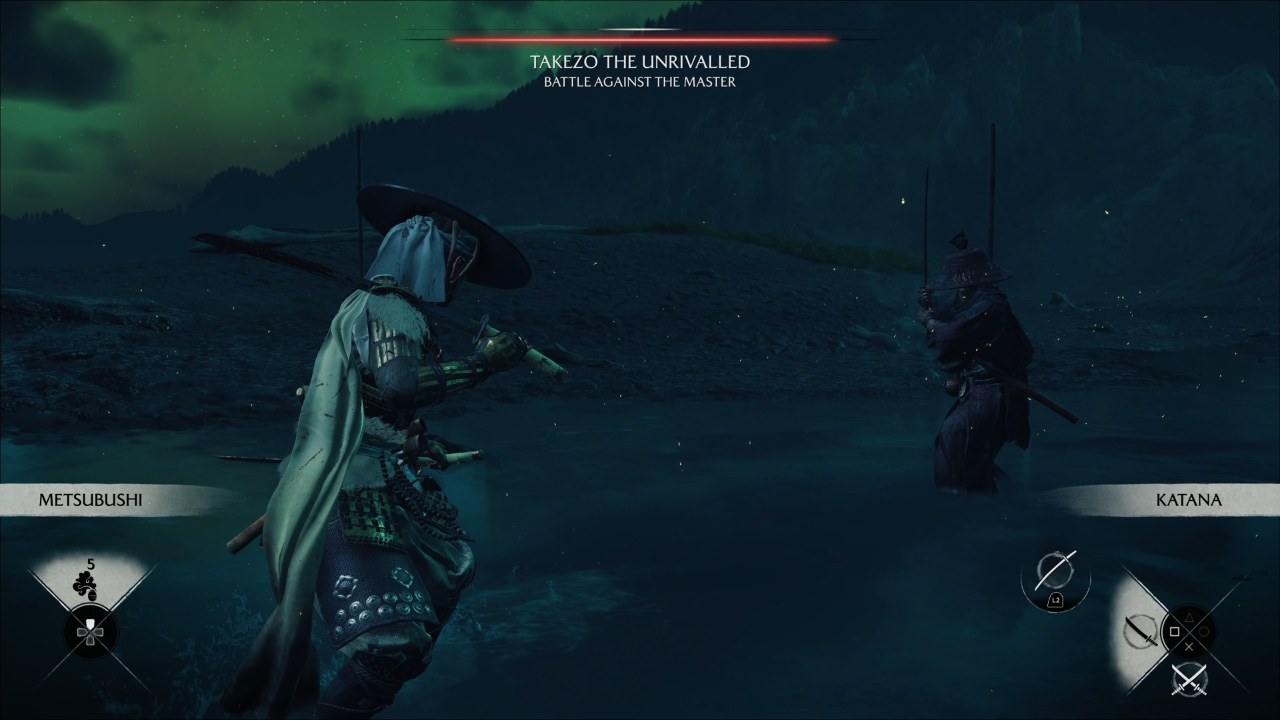
Duals and stand-offs return to test your skills and reflexes, with the former offering some of the best combat encounters in the game if you can find them – and you’ll want to go looking. Exploration is simply glorious thanks to how ridiculously stunning the world is. Fields of flowers come alive as flocks of birds explode before your horse’s hooves, fireflies dance in the twilight, and swarms of butterflies swoop and flicker around points of interest. A brush of the touch pad summons a gust of guiding wind, or causes Atsu to pull out and play her shamisen, an instrument you learn to use during memory sequences found in the remnants of Atsu’s childhood home.
This, too, feeds directly into the exploration. As you meet other musicians and learn more songs, you can play them to lead Atsu to certain activities like wolf dens or Saito camps. It may be highly stylised, but it feels more magical than simply choosing an objective from a list. Pulling out Atsu’s spyglass will also let you survey the land for places to explore and quests to engage in – none of which are highlighted by glowing exclamation marks or the like. There are numerous activities, like matching scraps of treasure maps to your world map to find secrets, or painting portraits with gentle flicks of the DualSense touchpad, but I won’t list them all.
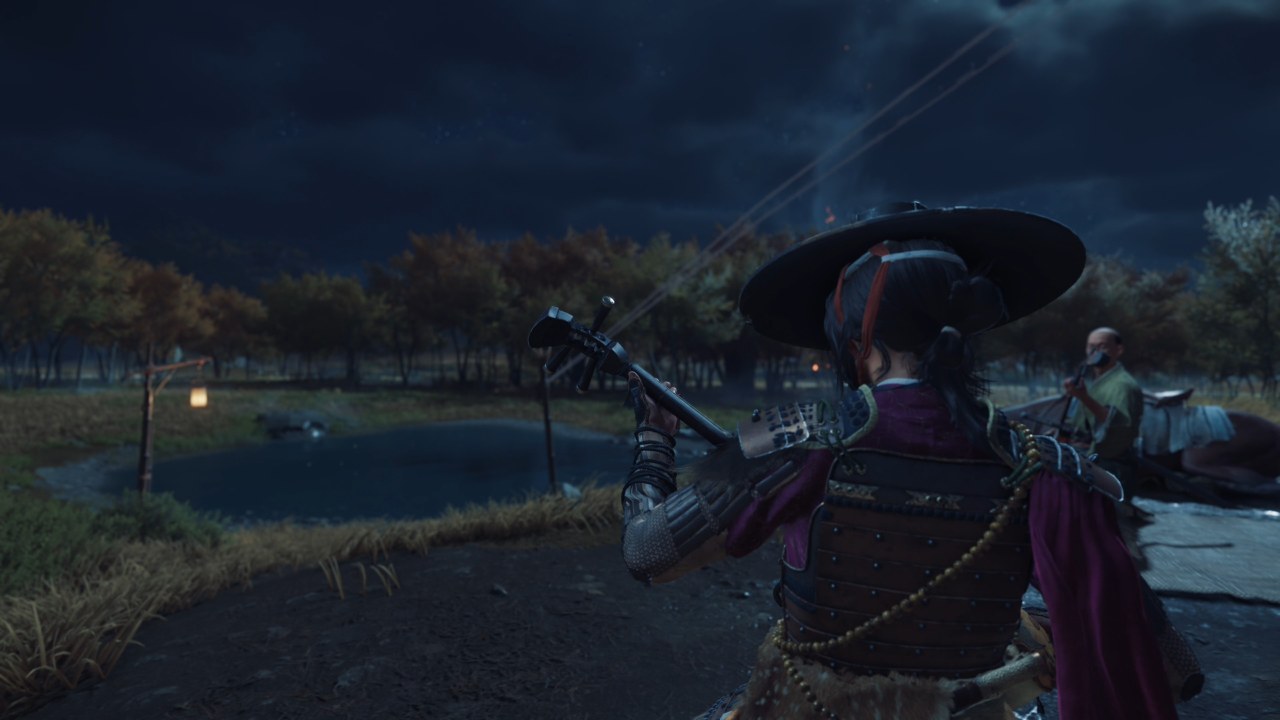
Since Tsushima launched we’ve had a couple of titles exploring similar themes in Rise of the Ronin and AC Shadows, but Sucker Punch have lost none of their edge. Ghost of Yotei is a staggering adventure set across a vast, distractingly beautiful landscape that never seems to run out of things to do, people to help, or enemies to defeat. The grittier story lacks a little of the nuance of its predecessor, but it makes up for it with tiny quality of life improvements and a soundtrack that hammered me in the feels with every track.
I got lost in this world, not through lack of direction but simply in the wonder of it. I found myself ignoring the fast travel because I just wanted to ride places, ignoring the standoff option in enemy camps because I wanted to engage with the stealth mechanics, and then relishing it when I made mistakes because combat is at its gloriously messy best when you’re surrounded by enemies. In a year of surprise hits, Ghost of Yotei surprises no one by taking up the mantle dropped by Tsushima and running with it. Quite simply, this is a genuine masterpiece.
